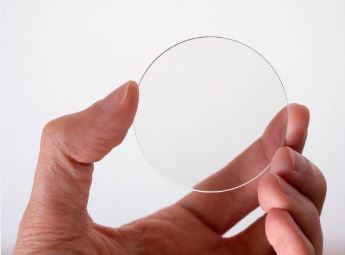After years of putting in a lot of effort, they may now require some help in order to see things clearly at various distances.
What are progressive lensesProgressives’ lenses can help with the constant switching and figuring out of what is comfortable?
Table of Contents
What Are Progressive Lenses?
What are progressive lenses? It is the most important question you should know first. A progressive lens is an amazing feat of engineering that enables multiple vision fields to be combined into a single lens without any obvious distinction between the fields themselves. The power in the lenses “progressively” changes from far-to intermediate to your full reading power. This is why progressive lenses are often referred to as “no-line” bifocals or trifocals.
Presbyopia is a vision condition characterized by a loss of the ability to focus clearly on close objects, which is why progressive lenses are best for patients who have them.
Our capacity to see things close by and far away can deteriorate naturally as we get older. Progressive lenses address separate visual needs in one lens – usually with a “distance viewing” field built into the upper portion of the lens and a “near vision” field built into the lower portion. Rather than a line separating these areas, they are “blended” together, often with the middle portion of the lens serving as intermediate vision correction when necessary.
A progressive lens’ various fields are not clearly delineated by visible lines like traditional bifocals or trifocals are. Your eyes are seen clearly behind the progressive eyeglasses, you’ve got the same “look” as eyeglass wearers often half your age, and there are no “lens lines” to distract your vision.
How Do Progressive Lenses Work?
After knowing what are progressive lenses, the theory of their work is also vital to be realized. As you grow older, your near vision usually suffers. Your eye doctor will first look at your distance prescription to understand how progressive lenses function. Your head position will need to be adjusted as you look through various parts of the lens.
This is so that you can look down to read, straight ahead to see objects in a moderate distance, and up to see something farther away thanks to the progressive lens’s multiple vision fields. All of this is possible with progressive lenses without switching out the lenses.

When Do You Need Progressive Lenses?
Numerous conditions, including overlapping ones that may be uncomfortable and impair vision, can have an effect on our eyes. Many of these issues can be fixed with the aid of progressive lenses, which also ease discomfort.
Here are some of the reasons why progressive lenses are required:
- Presbyopia, which causes hazy near vision, frequently develops around the age of 40. The most popular type of lens for treating this issue is progressives.
- Myopia progression can be slowed down and astigmatism can be cured with progressive lenses.
- For those who need to correct both their near- and farsightedness, progressive lenses are advised.
Depending on your particular vision issue, the adaption period for progressive lenses can last anywhere from minutes to days. For testing and lens customization, consult an optician or eye doctor.
An important investment in your present and future health is routine eye examinations. To find out if you have any undiagnosed eye conditions, whether you need glasses, and which lenses are best for you, schedule an appointment with an eye care professional today.
What Are the Benefits Of Progressive Lenses?
While a progressive lens can provide “no line” visual clarity, besides knowing what are progressive lenses, it’s important to understand the disadvantages of these lenses.
1. You Must Learn How To See Through The Lens
It is simpler to pinpoint where to look for clear vision when wearing bifocals or trifocal lenses because they have a visible line. There is a learning curve with progressive lenses because there isn’t a line, and it could take one to two weeks to understand how to use the lens properly.
2. Temporary Vision Distortions
A progressive lens’ lower portion is magnified because reading is its intended use. Because of this, it can be challenging to judge your step if you look downward when stepping off a curb or going upstairs. Stumbling or tripping may result from this.
To avoid issues while walking, you will need to train your eyes to focus on the distant portion of the progressive lens rather than the reading portion.
When moving your eyes side to side, progressive lenses can also result in peripheral distortion. As your eyes get used to the lenses, these visual effects disappear.
3. More Expensive Than Single-vision Lenses And Bifocal Lenses
The price differences between progressive, single-vision and bifocal lenses should be kept in mind. Because you effectively get three eyeglasses in one, progressive lenses are more expensive. It helps you know more about what are progressive lenses.
You are also paying for the added convenience and labor-intensive process required to create multifocal eyeglasses with no lines.
However, some people believe that the additional cost is justified given the simplicity and convenience of progressive lenses.
What Are the Drawbacks Of Progressive Lenses?
Progressives require some adjusting. You should practice looking through the lower portion of the lens when reading, straight ahead when looking at something far away, and in between the two spots when looking at a computer or something in the middle of the room. Most people adjust, but some never do. You might experience nausea and vertigo during the learning process as a result of using the incorrect lens section. Your peripheral vision, or what you see when looking straight ahead, may also be slightly distorted.
The price is something else to think about. The price difference between progressive lenses and conventional bifocals is at least $100.
Sometimes people who spend a lot of time on the computer or read small print up close may prefer to have a different pair of glasses with a larger area for those up close activities. When engaging in close-range activities for extended periods of time, it can occasionally be difficult to find the ideal range for specific distances.
How To Adjust Progressive Lenses?
The purpose of knowing what are progressive lenses is to choose them. If you decide to try them, use these tips:
- Select a reputable optical store that can help you with the process, assist you in selecting a suitable frame, and ensure that the lenses are perfectly centered over your eyes. People frequently struggle to adapt to progressives because they are poorly fitted.
- Adapt to them over the course of a week or two. Some people might require up to a month.
- Be sure to comprehend the usage instructions provided by your eye doctor.
- Stop wearing your old glasses and wear your new lenses as much as possible. A faster adjustment will result from it.
Knowing what are progressive lenses, and choosing a suitable progressive lens for yourself.


